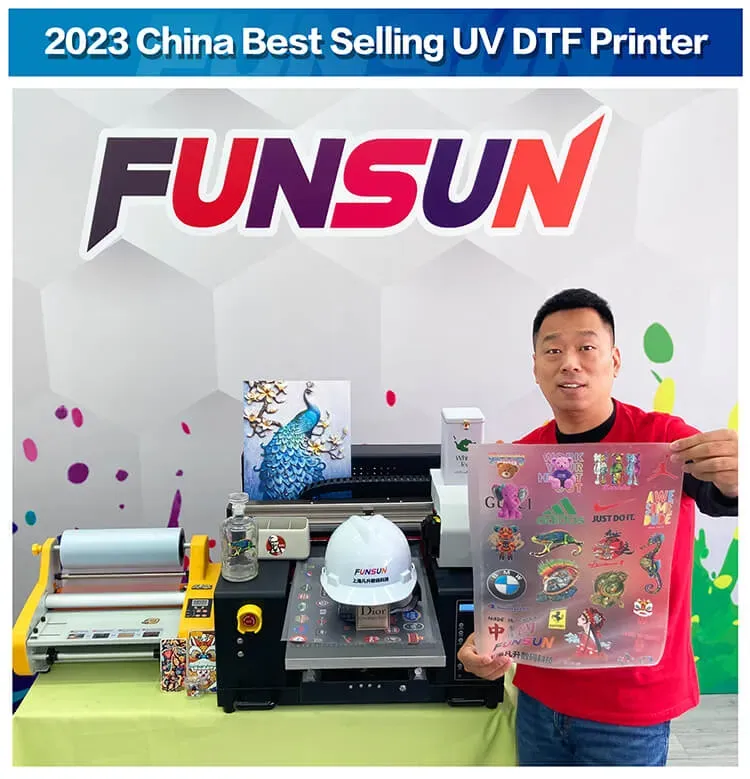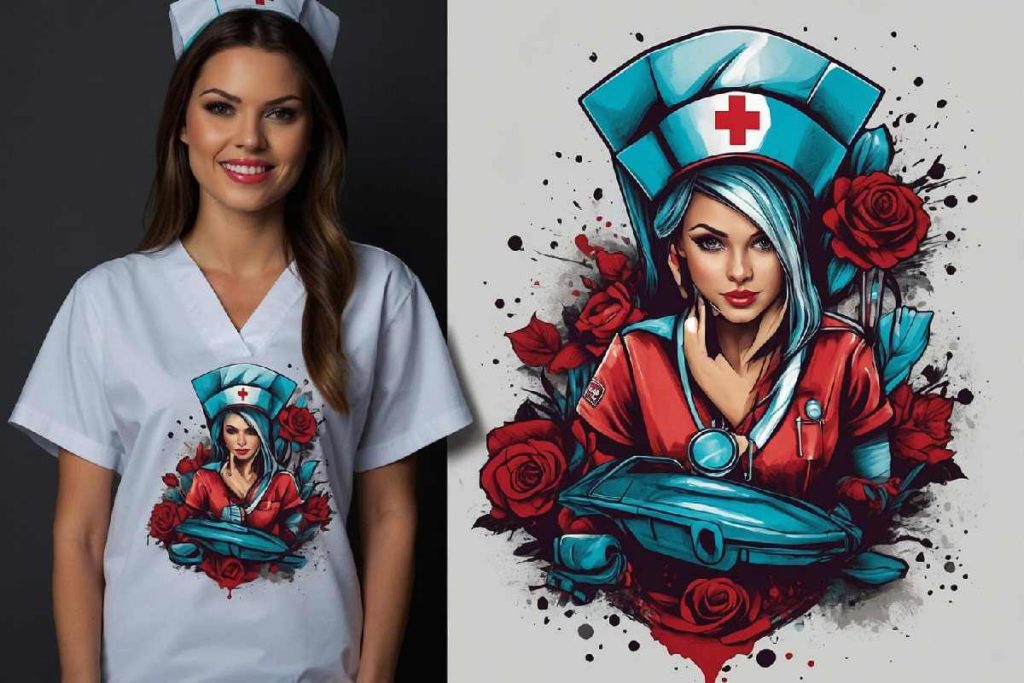UV DTF printing, or Ultra Violet Direct to Film printing, represents a groundbreaking innovation in the world of custom printing. It combines the efficiency of modern technology with the flexibility of traditional methods, allowing businesses to create vibrant designs that adhere to a variety of materials without the need for surface pretreatment. Unlike screen printing, which can be cumbersome for small batches, UV DTF printing is designed for versatility, delivering exceptional print durability and color quality. This makes it an attractive option for those looking to stand out in the market and cater to niche demands. As demand for custom printing continues to grow, UV DTF printing is proving to be a transformative method that meets diverse needs while optimizing production efficiency.
When exploring the realm of modern printing techniques, terms like digital transfer printing or UV curing technology often come into play alongside UV DTF printing. This approach is reshaping the landscape of graphic production, offering distinct advantages over traditional printing methods such as screen and lithographic printing. The blend of ultraviolet light technology and film transfer enables businesses to achieve unparalleled print quality and adapt to various substrates swiftly. As we dive deeper into this subject, we will uncover how this innovative method enhances print durability and provides an essential edge in the competitive custom printing market.
Introduction to UV DTF Printing
UV DTF (Direct to Film) printing represents a significant advancement in the printing industry, harnessing the power of ultraviolet light to cure inks during the printing process. This innovative method allows for the application of vibrant designs on an array of substrates, including textiles, wood, and metal. Unlike traditional printing methods, which often require extensive setup and pretreatment of surfaces, UV DTF simplifies the workflow, offering a streamlined approach to custom printing that is ideal for both small-scale and larger production needs.
The popularity of UV DTF printing is largely attributable to its exceptional versatility and impressive durability. As brands increasingly seek unique and personalized products, UV DTF meets this demand by enabling the creation of customized merchandise with stunning color accuracy and detail. The technology is particularly appealing for businesses in a competitive market, where the ability to produce striking visual designs efficiently can make all the difference in attracting customers.
Versatility of UV DTF Printing
One of the most substantial benefits of UV DTF printing is its ability to print on a wide variety of materials. This flexibility means that businesses can cater to diverse customer needs without being limited to a specific type of substrate. From fabrics used in fashion and promotional items to hard surfaces like metal plaques and wooden signs, the applications of UV DTF are virtually limitless, making it a go-to choice for those looking to expand their product offerings.
In contrast, traditional printing techniques such as screen printing typically focus on specific materials and have a more rigid framework. While they can produce high-quality prints for large runs, the lack of versatility may deter businesses that seek to provide varied and customized solutions. UV DTF shines in this area, allowing for both short runs and unique designs without the prohibitive setup costs associated with traditional methods.
Durability of UV DTF Prints
When it comes to print durability, UV DTF printing stands out due to its robust adhesion to surfaces. The cured ink forms a resilient bond that resists fading, chipping, and peeling, making it ideal for both indoor and outdoor applications. This level of durability ensures that products maintain their visual integrity over time, which is particularly important for businesses that want to produce long-lasting merchandise.
Traditional printing methods can sometimes fall short in this area, as the inks used may not be as resistant to environmental factors. For example, screen printing inks can fade over time, especially when exposed to sunlight or extreme weather conditions. The durability offered by UV DTF not only enhances customer satisfaction but also strengthens brand loyalty, as consumers appreciate high-quality products that withstand the test of time.
Economic Aspects of UV DTF Printing
While UV DTF printing initially requires an investment in specialized equipment, the overall economic setup can be less daunting for small businesses and startups compared to traditional printing options. The streamlined production process and reduced pretreatment needs lead to lower operational costs in the long run. For entrepreneurs looking to maximize profit margins while offering customized products, UV DTF presents a financially viable choice.
In contrast, traditional printing can incur high setup costs that can make it impractical for smaller batches or custom designs. Although economies of scale apply for high-volume orders, the initial investment can be a barrier for new players in the market. As such, businesses must weigh their specific needs against the potential financial implications of their printing choices.
Comparative Speed and Efficiency
Speed and efficiency are critical factors for businesses trying to meet tight deadlines and customer expectations. UV DTF printing offers a faster turnaround time compared to traditional methods, which often involve complex setups and longer drying times. This capability allows businesses to deliver products swiftly, enhancing customer satisfaction and providing a competitive edge in today’s fast-paced market.
On the other hand, traditional printing methods may be slower due to the detailed preparation required. The intricate nature of screen printing setups means that longer lead times are often a reality, making it less ideal for urgent orders or rapid production cycles. By utilizing UV DTF, companies can ensure they remain responsive to market demands without compromising on quality.
Quality and Customization in Printing
Quality is a paramount consideration in any printing application, and UV DTF printing excels in delivering vibrant colors and intricate designs. The UV curing process allows for finer detail and sharper images, which are crucial for brands that rely on aesthetics to attract customers. In a market where visual appeal is everything, UV DTF becomes an invaluable tool for achieving stunning results.
Conversely, traditional printing techniques may struggle to achieve the same level of detail and color vibrancy, particularly in custom designs. The limitations of ink properties and substrate compatibility can hinder the customization process, making it more challenging for businesses to meet specific client needs. With UV DTF, the ability to produce high-quality, customized prints sets it apart as a leading option for businesses aiming for excellence in their product offerings.
Frequently Asked Questions
What is UV DTF printing and how does it compare to traditional printing methods?
UV DTF printing, or Uv Direct to Film printing, utilizes ultraviolet light to cure inks onto a transfer film that can be applied to various substrates. Unlike traditional printing methods such as screen printing, which often requires extensive preparation and is less versatile, UV DTF offers quicker setup, enhanced customization, and the ability to print on a wider array of materials.
What are the primary advantages of UV DTF printing over traditional printing methods?
UV DTF printing boasts several advantages over traditional printing, including impressive durability of printed materials, the ability to print on both hard and soft substrates, and lower initial setup costs. Additionally, UV DTF provides superior vibrancy and detail in prints, making it a preferred choice for custom printing projects.
Is UV DTF printing cost-effective compared to traditional printing for small batch orders?
Yes, UV DTF printing is often more cost-effective for small batch orders compared to traditional printing methods such as screen printing. While traditional printing can benefit from economies of scale, UV DTF’s lower setup costs and efficiency in production make it ideal for businesses that require custom, short-run products.
What types of materials can UV DTF printing be applied to?
UV DTF printing is versatile and can be applied to a wide range of materials, including fabrics, wood, glass, and metal. This capability provides businesses the flexibility to create diverse products, from custom merchandise to signage, unlike traditional methods which may be limited by substrate compatibility.
How does the durability of UV DTF prints compare to traditional printing techniques?
UV DTF prints are known for their exceptional durability, resisting fading and wear even when exposed to outdoor conditions. In contrast, traditional printing methods may not offer the same level of robustness, especially with certain inks that can fade over time or may require additional protective coatings.
What should I consider when choosing between UV DTF printing and traditional printing?
When choosing between UV DTF printing and traditional printing, consider factors such as the volume of your order, materials you wish to print on, desired print quality, and customization requirements. UV DTF is generally better for small, custom jobs, while traditional printing may be more suited for high-volume production with standard designs.
| Key Point | UV DTF Printing | Traditional Printing |
|---|---|---|
| Versatility Across Materials | High versatility, allowing printing on a wide range of substrates (soft and hard) for various applications. | Limited flexibility, primarily efficient for bulk orders and established substrates. |
| Durability | High durability; inks resist fading, suitable for both indoor and outdoor use. | Variable durability; may fade over time, especially outdoors. |
| Setup Cost | Typically lower initial investments but requires specialized equipment. | More cost-effective for high-volume production; higher setup costs for small runs. |
| Learning Curve | Requires technical knowledge for operation and maintenance of printers. | Well established with a lower learning curve; easier for those familiar with traditional methods. |
| Quality and Customization | Offers vibrant colors and high-quality detail with customization capabilities. | Good quality output, but often lacking in color vibrancy and detailed customization options. |
Summary
UV DTF printing has garnered significant attention as a modern printing solution that offers versatility, durability, and economic advantages. By utilizing ultraviolet light to cure inks directly onto various substrates, this method revitalizes the customization landscape, making it an attractive option for small businesses and entrepreneurs. Compared to traditional printing methods such as screen printing and lithography, UV DTF printing stands out for its rapid production capabilities and quality output. However, potential users should weigh the initial investment and learning curve against the benefits to determine the best fit for their printing needs. As the industry continues to evolve, understanding the nuances of UV DTF printing can help businesses make informed decisions.



